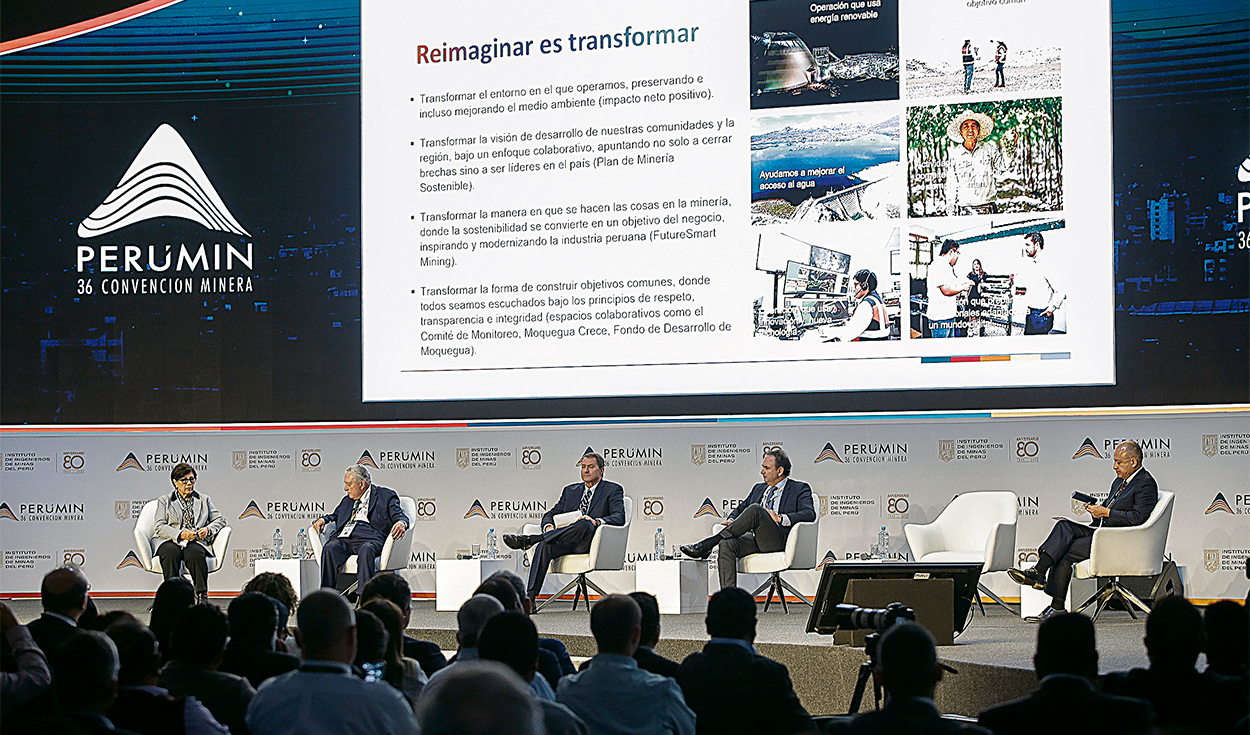
Peruvian mining has entered into the modernization of its production processes. The objective is to reduce the carbon footprint that was warned the day before by the Minister of the Environment. Albina Ruiz. The official pointed out that 20% of the emissions that cause climate change come from the extractive sector. The executives explained how they relate to the communities located in their area of influence.
The transnational Anglo American exploits the Quellaveco field in the Moquegua region. It is a copper mine that has begun operations. Its CEO in Peru, Adolfo Heeren, said the company built a freshwater dam on the Vizcachas River; Two-thirds of the water resource serves the communities located in the area of influence. The rest they use for their operations. The company also developed a network of local suppliers that supply them with services and products.
Likewise, he said that artificial intelligence was incorporated into its operations: the fleet of trucks that works to transport the concentrated material works automatically. The long-term objective is to reduce carbon emissions, for the units to operate with renewable energy, such as the hydrogen used in a mine the company has in Africa.
Tin leaders
In southern Peru, specifically in Puno, is San Rafael, a field operated by Minsur. They exploit the main tin mine in the world. Its CEO in Peru, Juan Luis Kruger, recalled that, during the social protests, a group of protesters tried to take San Rafael. However, the community of Antauta, where the extractive operation is located, prevented it. The majority of its workers work in that mining center.
Kruger pointed out that mining is resilient: it has endured terrorism, inflation, social conflicts and various challenges from which it has always emerged.
The Minsur representative announced that they have a plan to reduce emissions. By 2050, all its engines must operate with renewable energy.
Sociedad Minera Cerro Verde also spoke about its link with the Arequipa region. They operate a mining pit located less than half an hour from the city. Derek Cooke, one of its main directors, said that the site (in the hands of the State) began working with a fleet of 10 trucks. Today, almost all of its processes are automated. Their goal is also to reduce their carbon footprint.
Cooke admitted that they exploit a low-grade mine and that, despite this, they managed to make it profitable. He assured that the company has a great impact in the Mistiana region: for each mining worker, another 10 indirect jobs are created. “They say we don’t pay taxes? But we have delivered more than 800 million soles for Income Tax and royalties this year,” he explained.
He recalled that when the company expanded its second stage, the regional Gross Domestic Product increased by 35%. He reiterated that in the last decade they developed the water circuit: that means having invested in the construction of dams to guarantee fresh water. They also built a drinking water treatment plant and decontaminated the Chili River, where all the city’s drains reached. Although the city’s sanitation company negotiates for the mining company to pay for that wastewater.
At the end of the month there will be news
The majority of company officials complain about the procedures implemented by the State, the permits to carry out a mining project. There are 43 procedures and they take more than three years to resolve.
Regarding this, the president of Perumin, Miguel Cardozo, trusts that the Government will speed up the bureaucratic process. There is the offer of a single window so that the requirements are expeditious. There is a promise that there will be news in the coming weeks.
Reactions
Adolfo Heeren, CEO of Anglo American Quellaveco
“We have to create trust, that requires strengthening our institutions and the dialogue between us. “We must have a shared development vision of the country to achieve development.”
Juan Luis Kruger, CEO of Minsur
“We have faced great challenges, very difficult and different times, governments of all kinds, inflation. But Peruvian mining has always managed to move forward, it has been resilient.”
Source: Larepublica
Alia is a professional author and journalist, working at 247 news agency. She writes on various topics from economy news to general interest pieces, providing readers with relevant and informative content. With years of experience, she brings a unique perspective and in-depth analysis to her work.












